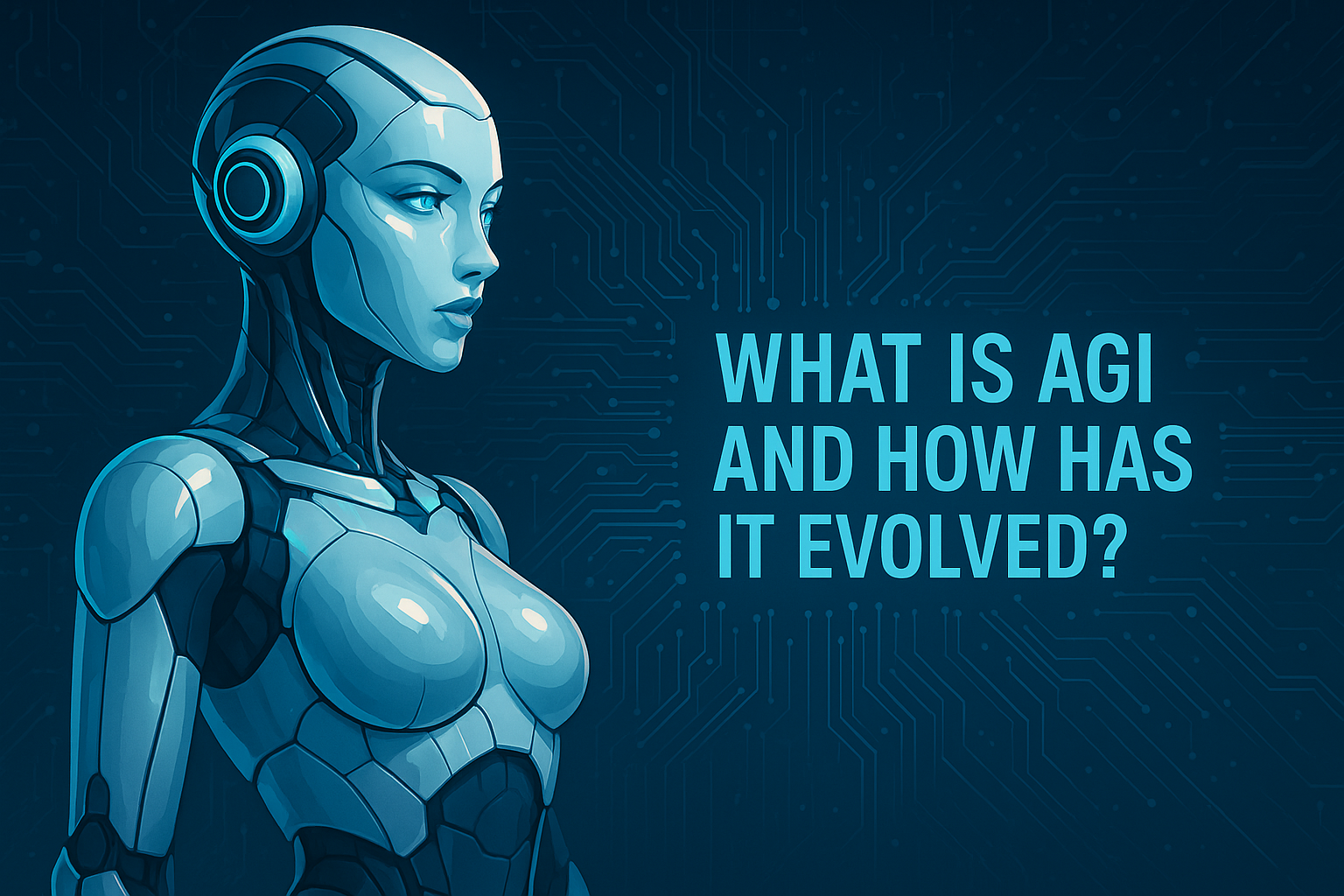AGI: What It Is, Benchmarks, and Timeline

What Is AGI and How Has It Evolved?
Artificial General Intelligence (AGI) is an AI that could understand, learn, and perform any intellectual task that a human can—transferring knowledge across different areas, not just one narrow task. Today's systems (like chatbots, image generators, navigation, or recommendation engines) are powerful but specialized. AGI would be broadly capable and adaptive.
Early Beginnings
In the 1950s, pioneers like Alan Turing wondered if machines could "think." The Turing Test proposed that if a machine could convincingly imitate a human in conversation, it might be considered intelligent. Early logic programs and game AIs raised hopes, but real-world common sense and perception proved much harder.
AI Winters → Machine Learning
From the 1970s to early 2000s, cycles of hype and disappointment ("AI winters") slowed progress. The shift to machine learning and especially deep learning let systems learn from data, leading to big gains in vision, speech, and language.
Modern Foundations
Since the 2010s, large models trained on huge datasets have become surprisingly versatile—writing, coding, summarizing, and planning. Still, they're not truly general: they can lack robust understanding of the physical world, long-term autonomy, and self-directed goals. Research now explores multimodal learning, reinforcement learning, and agent systems that can plan and improve over time.
Has the Benchmark for AGI Changed?
Short answer: Yes—dramatically. The field has moved from a single pass/fail test to a portfolio of capabilities measured across many benchmarks and real-world evaluations.
Yesterday's Yardsticks
- Turing Test: Imitate a human in conversation
- Single-task excellence: Chess, Go, logic puzzles
- Academic exams: Narrow tests of knowledge or patterning
Today's Evolving Bar
- Capability portfolio: Reasoning, planning, coding, math, science, language, vision, audio
- Transfer & generalization: Solve novel tasks, not just memorize training data
- Real-world reliability: Tool use, browsing, calling APIs, working over days/weeks
- Safety & alignment: Follow instructions, avoid harmful actions, respect constraints
- Robustness: Handle ambiguity, noisy inputs, and adversarial prompts
Examples of Benchmarks (Not Exhaustive)
- Language/Knowledge: MMLU, BIG-bench, multi-turn dialogue quality
- Reasoning/Math: GSM8K (grade-school math), advanced word problems, contest-style proofs
- Coding/Software: HumanEval, SWE-bench (real issues), repo-level repair
- Planning/Agents: Multi-step tasks with tools (search, spreadsheets, IDEs), long-horizon projects
- Vision/Multimodal: Image/video understanding, chart/diagram reasoning, grounding in real images
- Safety: Adversarial red-teaming, jailbreak resistance, refusal accuracy
The consensus trend: AGI should look competent and reliable across many settings, with clear evidence of transfer, autonomy, and safety—not just a single chat demo.
Bottom line: Rather than one magic test, the modern "AGI bar" is a balanced scorecard spanning capabilities, reliability, and safety under novel, real-world conditions.
AGI Timeline: Key Eras and Outlook
This timeline highlights key eras in AI development and provides a plausible, uncertainty-aware outlook. Dates are approximate and for educational purposes.
Historical Milestones
1950 - Symbolic AI & Early Hopes
- Alan Turing introduces the concept of machine intelligence
- Early logic programs and game-playing AIs emerge
- High hopes meet the reality of limited computing power and understanding
1970s-2000 - AI Winters & Narrow Systems
- Cycles of hype followed by disappointment
- Funding cuts and reduced research activity
- Focus shifts to narrow, specialized applications
2000-2015 - Deep Learning Boom
- Massive datasets become available via the web
- GPU acceleration enables training of large neural networks
- Breakthrough achievements in vision, speech, and language understanding
2015-2025 - Foundation Models & Tools
- Large language models demonstrate surprising versatility
- Multimodal systems combine vision, language, and audio
- AI agents begin to use tools and perform complex tasks
Future Outlook (2025-2045)
Progress is accelerating, but timing remains uncertain. Some experts expect AGI-level capabilities within one to two decades; others argue it may take longer.
Key considerations:
- Safety first: As capability rises, managing safety, alignment, and societal impact becomes critical
- Multiple pathways: AGI may emerge through various approaches—scaled transformers, neuromorphic computing, hybrid systems, or entirely new architectures
- Gradual vs. sudden: Progress may be incremental or could involve rapid capability jumps
- Definition evolution: What qualifies as "AGI" continues to be debated and refined
Quick FAQ
Q: Does passing one benchmark prove AGI?
A: No. Modern thinking uses a suite of tests across different domains, plus real-world reliability and safety evaluations.
Q: Why not just the Turing Test?
A: It can be gamed by conversation tricks and doesn't cover planning, tool use, safety, or long-term autonomy.
Q: What should students watch next?
A: Multimodal reasoning, autonomous agents with tool use, and better safety methods (adversarial testing, value alignment).
Q: When will AGI arrive?
A: Predictions vary widely—from within the next decade to several decades away. The important thing is preparing for responsible development regardless of timeline.
Q: What are the main risks?
A: Misalignment (AI pursuing unintended goals), concentration of power, economic disruption, and autonomous systems acting in unpredictable ways. Active research focuses on making AI systems safe, interpretable, and aligned with human values.
This is an educational summary for a high-school senior audience. For deeper technical understanding, explore resources from AI Safety organizations, academic institutions, and responsible AI research labs.